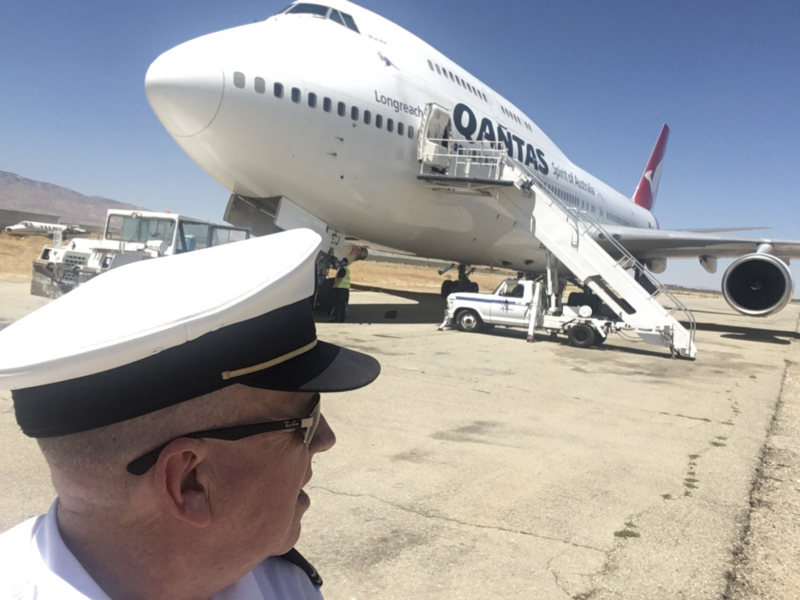When the Engines Fall Silent. By Owen Zupp.
Our interviews are done and the news outlets have broken the news – the final QANTAS Boeing 747 has fallen silent. Still, for the crew, the experience delves deeper than the headlines.
It takes a little less than two hours by road from the Mojave Air and Space Port to our apartment complex In Manhattan Beach, yet in contrast to the media attention and the events of the previous week, it was a relatively quiet coach ride.
We had just parked the final QANTAS Boeing 747 at its last port of call, the place they call, “The Boneyard”. While our aircraft, “Wunala”, had joined three of her recently parked compatriots on a distant taxiway, the main boneyard lay on the opposite side of the runway complex. From our vantage point, we could clearly see the myriad fins of now-silent airliners. An array of fading colours and white fuselages parked askew with no apparent order, as if poured out from some giant’s bag of toys.
When the time came to visit about the boneyard, our transport entered the facility, kicking up a trail of desert dust. Either side of the car stood giants in their own right – definitely not toys. Massive 747s were everywhere, conjuring comparisons to the “Elephant’s Graveyard”. Boeings, Lockheeds, and Airbuses abounded in every direction.
Stepping out, the scene was reminiscent of an old western movie with dust and tumbleweed coating the now flat tyres and landing gear legs. Vast empty rings hung from wings where engines once waited to spool up and flight deck windows were now replaced by sheets of plastic and yellow tape – or were missing altogether.
There were aircraft that I had once flown among their number, with one offering a ladder hanging teasingly from its nose gear doors. The airline markings had been painted out on its flanks and a coat of red paint now disguised the trademark flying kangaroo, but there was no mistaking its identity.
I clambered up the ladder, as the rest of the crew had done before me. We each wandered about the cabin, the silence exacerbated by the emptiness of the surrounding desert. Where passengers had once excitedly chatted, not a word was spoken. The occasional TV screen was extended from an arm rest and seat belts were untidily flung about. And dust – everything had a coating of dust.
Ascending the stairs, the flight deck was worse, Stripped bare, wires hung from the ceiling and out of every cavity that once held vital equipment. The seats were gone and the floor was covered in bits and pieces, washers and nuts. The speed brake sat impotently in the raised position, although the spoilers were now flush with the wings’ upper surface. One placard remained, reading “VH-OJS”. The aircraft I had crewed a little over a year before on its final service to San Francisco.
As we walked away from these abandoned hulks, it felt surreal. We were both amazed at the vastness of the aircraft parked there but also somewhat saddened by their inevitable neglect. Where engineers had once been meticulous and cabin and flight crews taken great care, there was only silent decay. Wisps of wind, blowing dust and the occasional bird the only occupants.
So as we sat in our coach back to return to Manhattan Beach, our silence was understandable. The TV reporters and their cameras were gone, with the internet left to spread the word. The crew had safely delivered Wunala and answered hundreds of questions and posed for as many photos. Now was the time to reflect and the Mojave boneyard had reinforced the finality of our flight. Outside the perimeter fence we could see our four red fins parked in the distance. That last image was of them still intact and together, their markings still in place as if they were ready to depart in formation.
That was my mental snapshot, not a conjured image of their fate. This would be my recollection and as the vehicle moved on, there would be no looking back.







